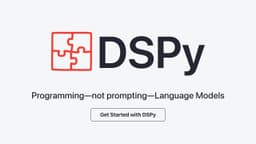RSS Feeds and Their Uses
RSS stands for Really Simple Syndication. It is a type of web feed that allows users to access updates to online content in a standardized, computer-readable format. In a world with abundant digital content, keeping track of updates can be challenging. RSS feeds serve as a personal digital news aggregator, helping users stay informed without checking multiple websites daily.
An RSS feed works like a news ticker for the digital age. It provides a continuous stream of information from favorite online sources like news websites, blogs, or podcasts. Each item in the feed typically includes a summary or full text, along with metadata such as the publishing date and author’s name. This feature allows users to skim through various articles or topics quickly.
How Does an RSS Feed Work?
RSS feeds publish frequently updated information, including blog entries, news headlines, audio, and video, in a standardized XML format. This XML file is hosted by the website and continually updated with the latest content. To access the feed, you need an RSS feed reader or aggregator, which parses the XML file and displays the content in a readable format.
Why Use an RSS Feed?
RSS feeds can simplify your online routine in a busy world.
- Time-Saving: An RSS feed consolidates updates from various sources into one location.
- Stay Organized: Manage feeds into categories and subscribe only to relevant sources.
- Be in Control: Customize your content consumption, avoiding algorithm-driven suggestions on social media.
Setting Up An RSS Feed
Follow these simple steps to start using RSS feeds:
-
Choose an RSS feed reader: Select a web-based or desktop application that fits your needs. Examples include Feedly, The Old Reader, and Inoreader. Sign up for one.
-
Find RSS feeds to subscribe to: Look for the small orange RSS icon on your favorite websites or search for
[website name] + RSS feedin a search engine. Some readers allow you to paste the homepage URL to find the feed automatically. -
Subscribe: Copy and paste the RSS feed URL into your RSS reader. The reader will check for updates regularly.
-
Organize: As you add subscriptions, you can typically sort these into folders or categories for easier management.
-
Read: After setting everything up, you can read the latest updates from your chosen sources, presented in an easy-to-navigate format.
Best Practices for Using RSS Feeds
- Prune Regularly: Keep your feeds relevant by unsubscribing from sources that no longer interest you.
- Balance Your Sources: Obtain different perspectives for news to ensure a well-rounded view.
- Discover and Explore: Use your RSS reader's discovery features to find engaging content.
RSS feeds provide an efficient method to monitor your favorite web content. Utilizing an RSS feed reader can help you stay informed while saving time.
(Edited on September 4, 2024)












